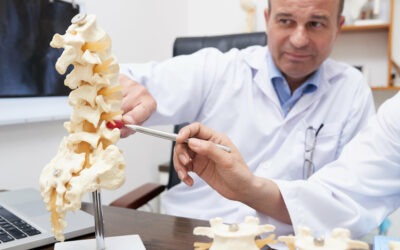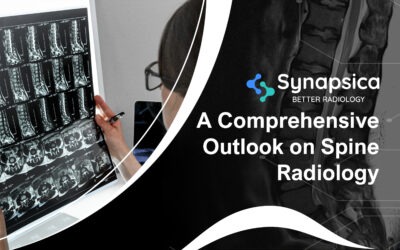
Misdiagnosis of spine diseases is becoming increasingly common today. And most misdiagnoses lead to malpractice lawsuits that can jeopardize a physician’s career and reputation. Unfortunately, even physicians are not infallible.
Misdiagnosis is not the result of incompetence or inadequate training. There are numerous other reasons like lack of complete information, patient information, and symptoms that can point to a different disease, lack of clinical value in reports, etc. In most cases, misdiagnosis is often pinned on the physician’s efficiency.
This article explores the causes of misdiagnosis of spine problems and how AI algorithms can help physicians avoid malpractice lawsuits.
1. Why are spine problems often misdiagnosed?
1.1. Numerous spine problems share the same symptom
Back pain is a tricky situation for physicians regardless of their expertise. Getting to the root of the spine problem is tricky because there is a wide range of spine problems that share the same symptom.
For instance, SI joint pain, piriformis syndrome, and entrapment neuropathy are some conditions that share low back pain symptoms. In the presence of a progressing lumbar herniated disc, circumstantial evidence like imaging tests often makes physicians consider disc degeneration as the reason for low back pain.
In such cases, the patient is treated for disc degeneration. However, the patient will be recovered only for a short time and is likely to return to the hospital with low back pain, which is, by all means, not the fault of the physician.
1.2. Patient information and symptoms pointing at a different condition
Patient information and symptom description play a major role in diagnosing spine problems.
Patients at times don’t have a record of their previous medical history. Also, the patient’s description of his/her pain can be misleading. This is because pain is a subjective experience. Conditions like disc herniation are asymptomatic until they worsen. Thus a physician might rule out the possibility of herniated discs when the patient describes his pain to be mild.
Hence, conditions like disc herniation can go undiagnosed or can be misdiagnosed to be posture problems.
1.3. Lack of clinical value in reports
Physicians are not solely responsible for the misdiagnosis of spine diseases. Radiologists also play a major role in diagnostic errors as physicians confirm their suspicions after reading the radiology report.
Subjective reporting has reduced the clinical value of reports to an extent where not only physicians are susceptible to make wrong diagnosis but even surgeons prefer referring scans over reports.
Not just subjective analysis, even the disconnect between radiologists and physicians contributes to the misreading of images. As the radiologists are not aware of the patient’s symptoms (from his/her words) or directly from the treating physician, they might not be able to correlate the symptoms and findings from the image, leading to no diagnosis or misdiagnosis of the spine diseases.
2. How Spindle reduces diagnosing and reporting errors
AI, one of the powerful technologies of the digital era, has revolutionized healthcare services in numerous ways. It is because of this breakthrough technology the healthcare industry was able to successfully combat one of the biggest unprecedented pandemics COVID-19.
The potential of AI in healthcare is rapidly increasing. This has made health tech firms and healthcare providers consider the use of AI in spine radiology.
Spindle, a new-age AI tool for reading and reporting spine MRIs, is doing an exceptional job of reducing diagnostic and reporting errors. Physicians are now able to look through the image beyond the obvious with the help of Spindle.
A brief abstract of how Spindle is enabling physicians to avoid misdiagnosis and malpractice lawsuits:
2.1. Enables detailed reading of scans with quantitative imaging analysis
Anybody from a healthcare background is well aware of the benefits of quantitative imaging analysis in patient care. But the biggest challenge in quantitative imaging analysis is that it is time-consuming and human errors due to fatigue and work pressure are inevitable. Another major problem is the growing shortage of radiologists.
Even if healthcare providers want to perform quantitative imaging analysis in the light of accurate diagnosis and to improve patient care, they are unable to do so due to radiologist scarcity. One of the reasons for Spindle’s invention was to help the healthcare industry overcome this challenge and perform quantitative imaging analysis efficiently.
Spindle automatically reads spine MRIs, locates and labels vertebrae, measures and characterizes all the spine elements, and identifies pathologies and their severity. As Spindle provides the measurement of the spine elements, such as vertebrae height, disc height, spinal canal diameter, foraminal diameter, etc., all that physicians have to do is compare Spindle’s values against anatomical values, enabling them to diagnose diseases with increased accuracy.
Also, with Spindle automating quantitative imaging analysis, there is less room for intra-observer or inter-observer variability, and most importantly little to no room for misdiagnosis.
2.2. Bridges the communication gaps between radiologists and physicians with objective reports
As we discussed earlier, radiology reports are one of the most important means of communication between physicians regarding a patient’s condition. Hence, it is paramount that these reports are structured and objective. Not just that, radiology reports possess the power to change the course of treatment or surgery.
Spindle automatically generates objective reports with pathological annotated images, quantification of spinal elements and abnormalities, and illustrative graphs and tables within seconds.
Spindle not only takes reporting a step further and shortens the communication gap between radiologists and physicians but also saves radiologists time spent on report generation. In other words, Spindle allows radiologists to focus more on the analysis rather than mundane tasks like reporting.
2.3. Allows radiologists to focus on the correlation of symptoms through automation
70% of radiologists’ time in spine MRIs is spent on tasks that can be automated using technologies like deep learning and machine learning. For instance, tasks like image sorting, marking of morphological points, locating and labeling vertebrae, and even reporting generation. This makes it hard for radiologists to spend sufficiently on image analysis and increases the chances of missing out on details during eyeballing. This ultimately leads to misdiagnosis or misinterpretation and malpractice lawsuits.
Spindle automates almost all the manual reporting tasks performed by radiologists in spine MRIs, right from image sorting to report generation. This in turn helps radiologists with adequate time to correlate patients’ symptoms with their findings and make a thorough study without missing out on any details, even the minor ones.
99% of physicians face at least one lawsuit before the age of 65, says the New England Journal of Medicine. But, Spindle is built to change this fact.
Just a 2 minutes demo video of Spindle will show how you can avoid misdiagnosis of spine diseases and malpractice claims in real-time.





